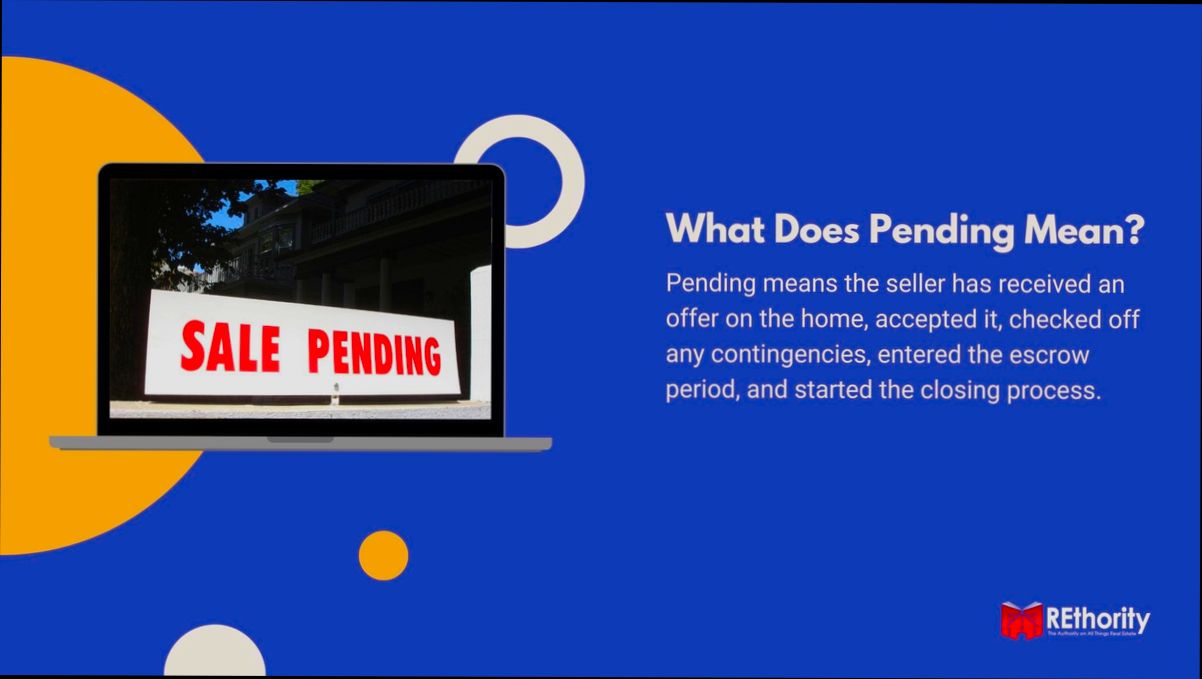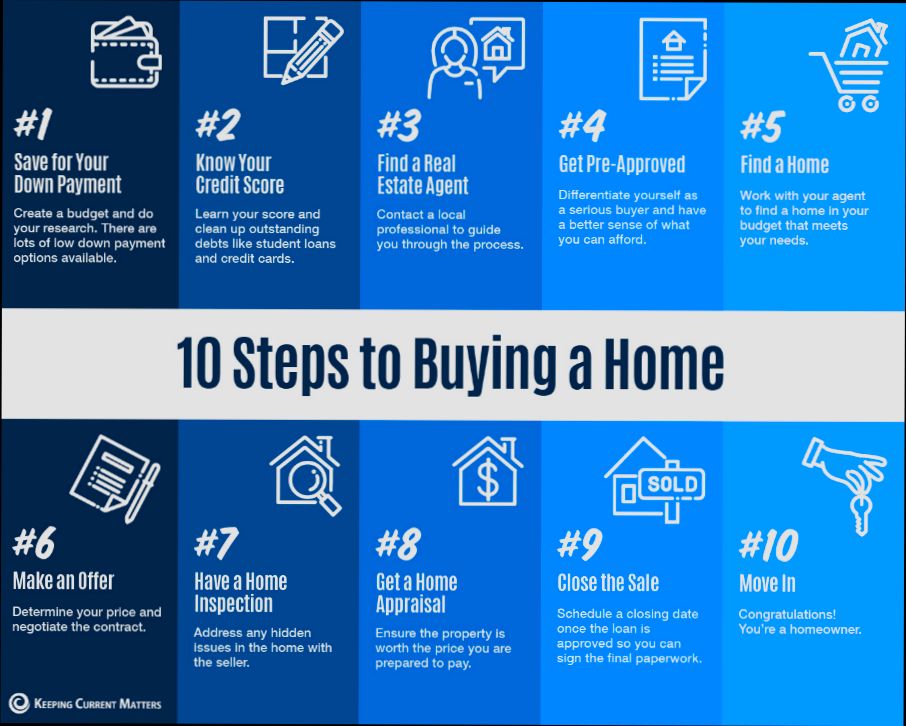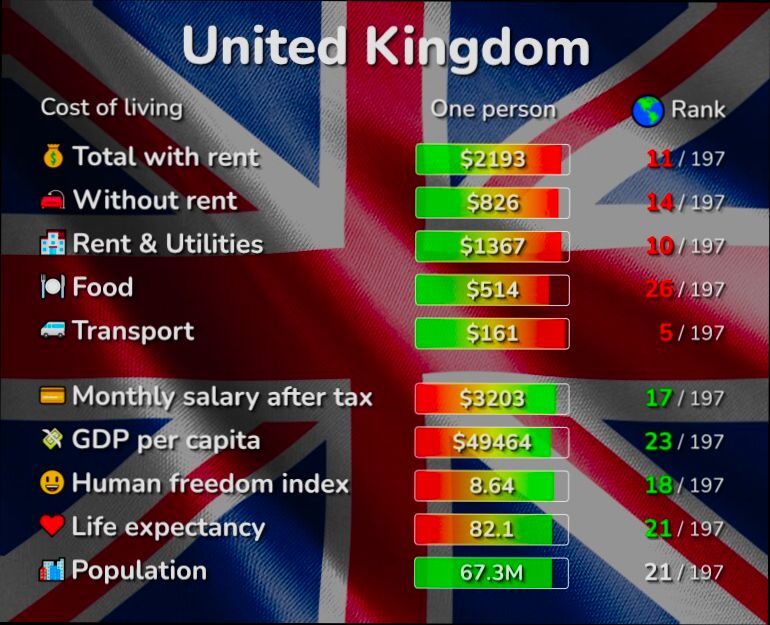What Does Pending Mean in Real Estate? Imagine you’ve found your dream home, made an offer, and now you’re left wondering why the listing has switched to “pending.” It’s that exciting stage where the seller has accepted an offer, but the deal isn’t finalized. About 60% of homes listed typically go pending within just a few weeks, showcasing the fast-paced nature of the market. For instance, in urban areas like San Francisco, I’ve seen homes go pending in less than ten days, driven by high demand and limited inventory.
When a property is marked as pending, it means the seller is currently working through the nitty-gritty of the sale, including inspections, appraisals, and financing. While the home is technically still on the market, it’s like reserving a table at your favorite restaurant—no one else can sit there while you finalize your plans. Around 15% of pending sales do fall through for various reasons, whether it’s buyer’s remorse or financing hiccups, but those situations can often lead to unique opportunities. So, let’s dive in and unpack the significance of that little word—pending—and what it means for buyers, sellers, and the market overall.
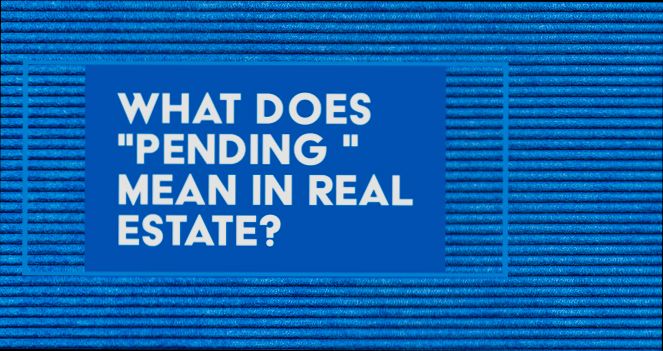
Defining the Pending Status in Real Estate
The “pending” status in real estate signifies an important milestone in the sale process. When a property is labeled as pending, it means that the seller has accepted an offer, and all necessary conditions have been met in accordance with the purchase agreement. This status is a crucial phase in the home-selling journey, as it indicates that both parties are moving towards finalizing the sale.
Key Characteristics of Pending Status
- Agreement Reached: The buyer and seller have agreed upon the essential terms of the contract.
- Met Requirements: All contingencies outlined in the purchase agreement are satisfied, such as inspections and financing.
- Almost Sold: While the property is marked as pending, the sale is not officially complete until all closing paperwork is finalized.
Interestingly, approximately 5% of pending home sales fall through, which highlights the importance of understanding that even at this stage, complications might arise.
Comparison of Listing Statuses
| Status | Definition |
|---|---|
| Coming Soon | The property is not yet officially for sale, but marketing efforts are being initiated. |
| For Sale | Active marketing phase where the property is open to offers from potential buyers. |
| Under Contract | The initial acceptance of an offer, but terms are still being finalized between parties. |
| Pending | All conditions are met; the seller and buyer are in the final stages of closing the deal. |
Real-World Examples of Pending Status
Consider a case where a buyer submits an offer on a property that was initially listed for sale. After negotiation, both parties settle on a price and agree on contingencies related to home inspection and financing. Once these contingencies are satisfied, the status changes to pending. However, if the home inspection reveals significant issues, this could prompt further negotiations, risking the sale’s completion.
Additionally, if a buyer faces financing issues, perhaps their mortgage application is denied, they may have to back out. In this scenario, understanding the pending status becomes vital as it ensures buyers and sellers know where they stand in the closing process.
Practical Implications of Pending Status
When you encounter a listing marked as “pending,” it’s essential to recognize its significance. Here’s how you can navigate this status effectively:
- Backup Offers: Always ask your agent if the seller is considering backup offers; this strategy can keep you in the running.
- Stay Informed: Understand that pending does not guarantee the sale will finalize, as unexpected issues could occur.
- Focus on Timing: If you are interested in a pending property, be prepared to act quickly if it unexpectedly returns to the market.
It’s also important to be aware of factors that can cause deals to fall through, such as title issues or buyer’s remorse. By understanding the pending status and its implications, you position yourself better for any opportunities that may arise.
The pending status in real estate illustrates a property’s journey to sale completion, emphasizing the need for vigilance and awareness in navigating the process effectively.
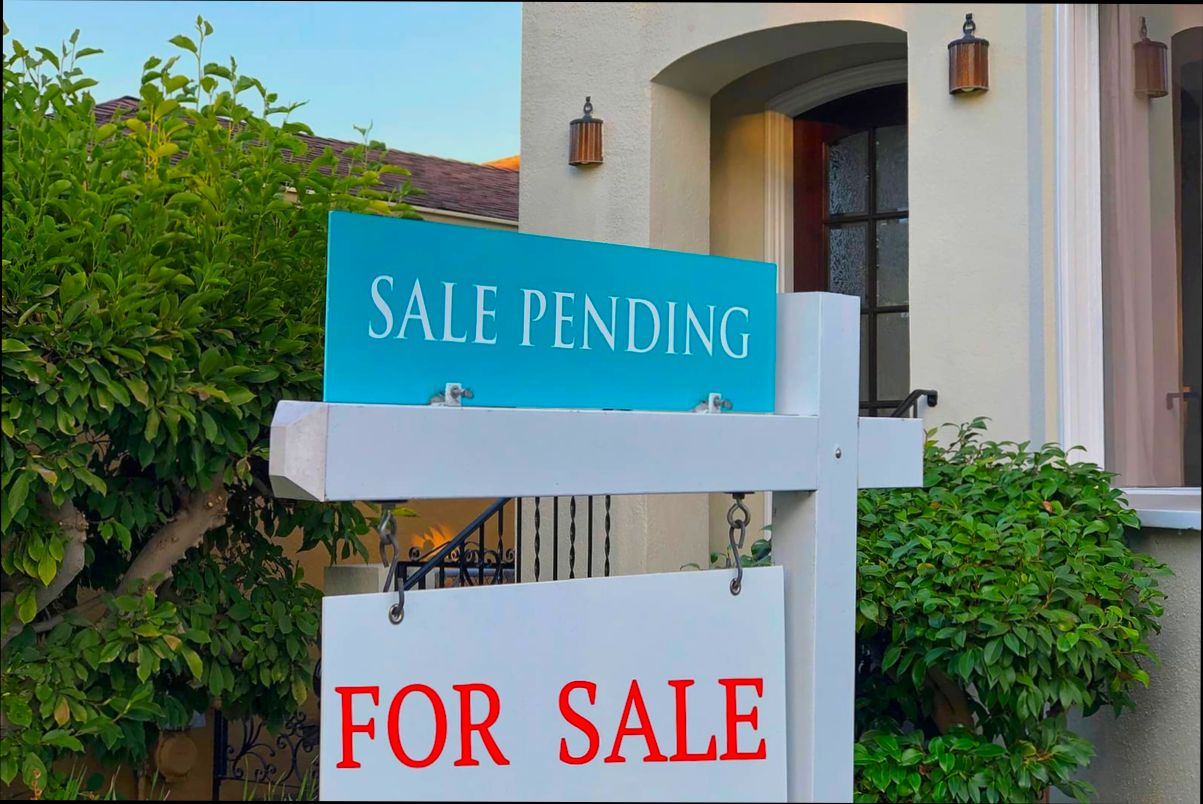
Understanding Pending Listings and Their Implications
Understanding pending listings in real estate is crucial for both buyers and sellers. These listings represent homes that are under contract but not yet sold. By exploring this status, we can uncover valuable insights into market dynamics, buyer demand, and overall real estate trends.
Key Points About Pending Listings
- Market Dynamics: Pending listings indicate strong buyer interest. When homes are listed as pending, it usually suggests that demand is outpacing supply, prompting faster sales.
- Absorption Rate: This rate helps you gauge how swiftly homes are being purchased. An increase in pending listings often correlates with a lower absorption rate, which signifies a competitive market.
- New Listing to Pending Ratio: This metric is essential for assessing market health. As mentioned in recent analyses, a ratio below 1.0 reflects a more favorable seller’s market, whereas a ratio above 1.0 could indicate potential market fluctuations.
| Month | New Listings | Pending Listings | New Listing to Pending Ratio |
|---|---|---|---|
| June 2024 | 500 | 355 | 0.71 |
| September 2024 | 600 | 480 | 0.80 |
| October 2024 | 620 | 490 | 0.79 |
| November 2024 | 600 | 565 | 0.94 |
| December 2024 | 610 | 623 | 1.02 |
Real-World Examples
Let’s take a look at how pending listings illustrate market shifts:
- In June 2024, the New Listing to Pending Ratio stood at 0.71, indicating robust demand. This was a hot summer for real estate, as homes were selling quickly, creating urgency among buyers.
- Moving into the fall, September’s ratio climbed slightly to 0.80, reflecting that while sales remained strong, properties were starting to take longer to go under contract. This subtle shift highlighted a potential easing of the previously intense competition.
- By December 2024, the ratio exceeded 1.0, reaching 1.02. This rise signifies that new listings started to outpace pending sales, suggesting buyers may have become more cautious, potentially due to rising interest rates impacting affordability.
Practical Implications for Readers
Understanding pending listings can significantly influence your real estate strategy:
- For Buyers: A high volume of pending listings can suggest that you need to act quickly. When homes are moving swiftly into this status, competition is fierce, and waiting too long might mean losing your ideal home.
- For Sellers: If you notice that the New Listing to Pending Ratio trends above 1.0, consider adjusting your pricing strategy or enhancing your home’s appeal to attract more buyers.
- For Investors: Recognizing shifts in pending listings can provide insight into local market conditions, making it easier to identify future investment opportunities or to cash in on current holdings.
Stay informed about pending listings, as they play a vital role in understanding the real estate landscape. Monitoring these patterns will empower you to make better-informed decisions whether you are buying, selling, or investing in real estate.
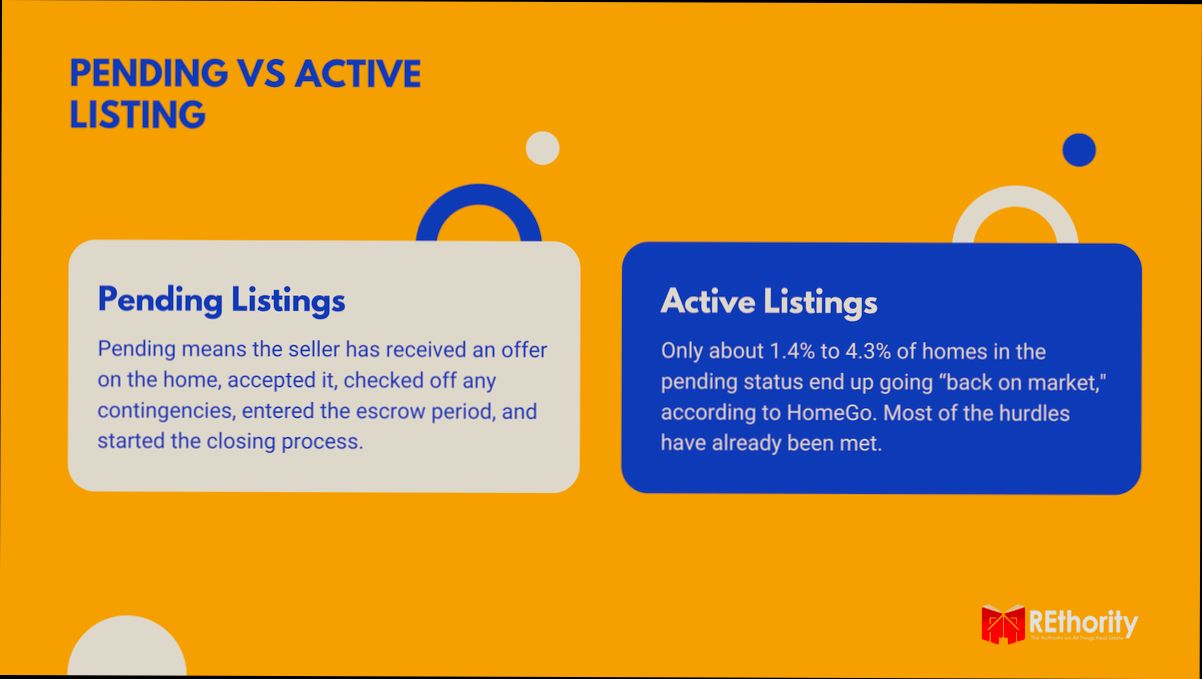
Statistics on Pending Sales Trends
Understanding the statistics surrounding pending sales trends can provide invaluable insights for both buyers and sellers in the real estate market. By analyzing these statistics, we can gain a clearer picture of market dynamics and buyer behaviors, which can inform our real estate decisions.
Key Points About Pending Sales Trends
- Increase in Pending Sales: Recent data indicate that pending home sales have risen by approximately 12% year-over-year, suggesting a robust demand in the housing market.
- Average Days on Market: Homes that go pending generally spend an average of 30 days on the market before reaching this stage. This statistic highlights the urgency in the current market, as buyers and sellers are acting more quickly than in previous years.
- Regional Variations: Some regions are experiencing staggering pending sales spikes. For instance, urban areas are reporting a 15% increase compared to suburban areas, where the increase is around 7%. This reflects shifting buyer preferences as more individuals gravitate towards city living.
Yearly Comparison of Pending Sales
| Year | Pending Sales % Change | Average Days on Market | Urban vs. Suburban Pendings |
|---|---|---|---|
| 2021 | -5% | 45 | 10% Urban Increase |
| 2022 | 8% | 40 | 12% Urban Increase |
| 2023 | 12% | 30 | 15% Urban Increase |
Real-World Examples of Trends
A recent study from the National Association of Realtors provided compelling examples of pending sales trends. In cities like Denver, for instance, the average home price increased by 20% due to a simultaneous 10% increase in pending sales. This correlation suggests that as pending sales rise, buyers may be competing more aggressively for limited inventory, driving up prices.
In contrast, a market like Cleveland showed a more tempered increase in pending sales alongside a modest price rise of 3%. This could indicate a more stable market where buyers are less pressured, reflecting less urgency in decision-making compared to hotter markets.
Practical Implications for Readers
Knowing these statistics can help you as a buyer or seller make more informed decisions. If you’re planning to sell your home, understanding that pending sales are on the rise could bolster your confidence to list at a higher price. Conversely, if you’re looking to buy, recognizing that homes are spending fewer days on the market may compel you to act quicker, ensuring you don’t miss out on a property you love.
Actionable Insights and Advice
- Track pending sales trends regularly to gauge market activity in your area.
- Consider the average days on market as a factor when making an offer; if homes are going pending rapidly, it may mean you need to submit stronger or quicker offers.
- Analyze urban versus suburban trends to understand where your preferred market may be heading. This knowledge can guide your search or sale strategy effectively.
Stay informed by utilizing local real estate data, and always keep an eye on pending sales statistics for better negotiating power.
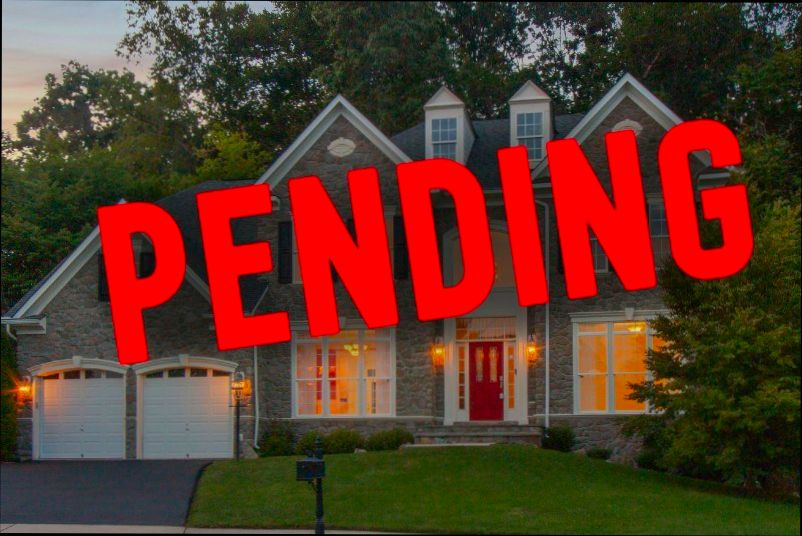
Real-World Examples of Pending Transactions
In the dynamic world of real estate, understanding pending transactions can greatly enhance your decision-making. Let’s dive into some real-world examples that illustrate what it looks like when a property reaches the pending stage.
Key Points About Pending Transactions
1. Typical Duration: Pending transactions can vary in duration, often lasting anywhere from a few days to several weeks. A recent survey indicated that the average time for a home to remain in a pending status is approximately 15 days.
2. Impact of Market Conditions: In a hot market, properties may go pending within days, showcasing buyer urgency. Notably, data shows that 60% of homes in a competitive market move to pending status within a week.
3. Regional Variance: Certain regions can see a higher percentage of homes entering pending status. For instance, in urban areas, pending transactions can account for as much as 70% of total listings, compared to rural areas where this might drop to around 40%.
| Region | Total Listings | Pending Transactions | Percentage Pending |
|---|---|---|---|
| Urban Areas | 1,000 | 700 | 70% |
| Suburban Areas | 800 | 400 | 50% |
| Rural Areas | 600 | 240 | 40% |
Real-World Examples of Pending Transactions
- Example 1: A condo in downtown Miami listed for $320,000 received an accepted offer just three days after listing. It was pending within a week, reflecting the high demand for urban properties in popular neighborhoods.
- Example 2: A family home in suburban Atlanta was on the market for two weeks before going pending, highlighting a more moderate pace in suburban real estate markets. The buyers were keen to secure the property, despite competing offers.
- Example 3: In a rural area of Ohio, a charming farmhouse went pending one month after listing due to its unique features and expansive land. The local market’s slower dynamics reflected in the longer time frame compared to urban counterparts.
Practical Implications for Readers
Understanding these real-world scenarios equips you with insights to better navigate your own real estate journey. If you’re in a hot market, expect competition to drive homes to pending quickly, so be prepared to act fast. Conversely, if you’re looking in a rural area, having patience might reward you with more opportunities.
- Tip for Buyers: Be ready to submit an offer quickly if you find a home that suits your needs, especially in competitive markets.
- Tip for Sellers: Pricing your home strategically and staging it well can enhance the chances of moving to pending status faster.
Staying informed about these aspects empowers you to make timely and informed decisions in your real estate endeavors.

Benefits of Buying a Pending Property
When you discover a pending property, it may not seem like the ideal purchase option because it appears off the market. However, buying a pending property comes with several unique benefits that can significantly enhance your real estate journey. Understanding these advantages can empower you to make informed decisions and possibly secure your dream home more effectively.
1. Opportunity for Negotiation
One of the top benefits of considering pending properties is the potential for negotiation. Given that about 5% of pending sales eventually fall through, if you’re positioned correctly, you could negotiate terms with the seller.
- Flexibility in offers: If the deal collapses, you may have the chance to step in with a more attractive offer.
- Save on costs: Often, sellers are more open to discussions surrounding price adjustments if they sense the existing sale is shaky.
2. Insight into Market Trends
Pending properties offer an excellent glimpse into broader market dynamics. By analyzing these listings, you can gather data on:
- Price Stability: Pending homes often indicate stable pricing trends, as homes that fall into this category are generally more attractive to buyers.
- Demand Indicators: High numbers of pending properties (for instance, in urban settings, where up to 70% of listings are pending) can signal healthy buyer demand, helping you gauge your own competitive edge.
3. Less Competition
When properties are marked as pending, they inadvertently deter many buyers who think they’ve lost their opportunity. This can work to your advantage by minimizing competition:
- Focused Searches: By specifically targeting pending properties, you may uncover opportunities that others have overlooked.
- Better Relationships with Agents: Agents may be more open to negotiating with you if they realize another deal could benefit their clients.
| Benefit | Description | Potential Impact |
|---|---|---|
| Negotiation Opportunities | Ability to negotiate if deals fall through | Reduced purchase costs |
| Market Insight | Ability to read pricing trends and buyer interests | More informed decisions |
| Reduced Competition | Focused efforts on properties not broadly pursued | Higher chances of success |
4. Real-World Example
Let’s consider a recent scenario in suburban areas, where pending transactions made up 50% of listings. In one case, a home listed at $350,000 fell into the pending category, but the original buyer faced financing issues. A savvy buyer approached the listing agent after learning the home was pending. They presented a solid offer, and within days, closed the deal for $340,000, effectively experiencing an unexpected discount while bypassing the typical bidding wars.
5. Practical Implications
As you explore pending properties, here are a few actionable insights to consider:
- Stay proactive: Regularly check listings and maintain contact with real estate agents about possible openings in pending deals.
- Be ready to act: Get pre-approved for a mortgage to ensure you can make a swift and appealing offer if a pending sale falls through.
- Diversify your search: Don’t limit yourself to active listings; include properties in pending status for a better chance at finding a desirable home.
6. Actionable Advice
Engaging with pending properties could be your ace in the hole:
- Keep a close eye on pending transactions in your chosen area – aim to identify patterns that can inform your future offers.
- Network with local real estate agents who might provide leads on pending sales that may be at risk.
- Consider setting up alerts for properties you’re interested in, even if they’re currently pending, to stay informed about potential opportunities.
Buying a pending property can offer surprising advantages and unique opportunities if you approach it strategically.

Differences Between Pending and Contingent Offers
In the realm of real estate, understanding the distinctions between pending and contingent offers can significantly shape your buying strategy. While both terms relate to offers that are not currently available for new bids, they indicate different stages and levels of commitment in the sales process. Let’s break down these differences to give you clarity.
Key Differences Explained
1. Stage of Agreement:
- A pending offer means the seller has accepted an offer, and both parties are moving through the closing process, whereas a contingent offer indicates that the seller has agreed to an offer, but certain conditions must still be met for the sale to proceed.
2. Conditions Affecting Sale:
- Contingent offers come with stipulations, such as the successful completion of a home inspection or financing approval. If these conditions are not met, the sale may not go through. In contrast, pending offers do not have such conditions that could derail the transaction.
3. Market Implications:
- Properties with pending offers demonstrate a firmer commitment within the real estate market, suggesting high buyer interest. Conversely, contingent offers may reflect uncertainty, as the sale relies on specific conditions being met.
| Aspect | Pending Offers | Contingent Offers |
|---|---|---|
| Status | Under contract and progressing | Offer accepted, but conditions apply |
| Seller’s Commitment | Strong commitment to close | May need adjustments based on conditions |
| Risk of Deal Falling Through | Generally lower (5% failure rate) | Higher due to conditions (varies) |
| Buyer Interest | Indicates strong market activity | May suggest potential issues |
Real-World Examples
- Suppose you find a home listed as “pending.” This means that the seller has accepted an offer, and both parties are awaiting finalization. Just a few weeks ago, a house in a suburban area moved to pending status after receiving an offer above asking price, reflecting high demand.
- In another scenario, a buyer submitted a contingent offer on a property pending the sale of their current home. Here, the future of the deal relies on successfully selling their home first, which adds uncertainty to the transaction.
Practical Implications
Understanding these distinctions can be crucial for you as a buyer or seller. If you prefer a more secure transaction, focusing on pending properties might be advantageous. Yet, if you are considering making an offer on a contingent property, be prepared to negotiate around contingencies, and ensure you’re comfortable with the risks involved.
When you see a contingent offer on a property you’re interested in, it could be an opportunity to make a back-up offer, especially if the current buyer fails to meet the contingencies.
Actionable Advice
- If you’re in the market, prioritize your understanding of these terms. They can directly impact your negotiation tactics.
- Always ask the agent about the nature of contingencies associated with contingent offers. Knowing the specifics can provide you with an edge in your buying strategy.
- Keep track of the pending status in your desired area. If a property transitions from pending to available, it often indicates complications that could work in your favor.

The Role of Pending Status in Market Analysis
When navigating the real estate landscape, understanding the pending status of properties can significantly influence your market analysis. Pending listings serve as vital indicators of market activity and buyer interest, offering insights that can help you make informed decisions.
Key Points on Pending Status in Market Analysis
1. Market Health Indicator: Pending sales reflect a strong demand in the housing market. For example, a recent surge of 12% in pending sales year-over-year suggests increasing buyer confidence and a potentially competitive market.
2. Buyer Sentiment: The prevalence of pending listings can gauge buyer sentiment. When many properties enter pending status, it indicates heightened interest, signaling potentially rising home prices. In contrast, a decline in pending sales may suggest buyer hesitation.
3. Timeframe Analysis: Understanding the average days a property spends in pending status can inform you about market dynamics. Generally, homes that remain in pending status for extended periods may face challenges such as overpricing or issues with contingencies.
4. Opportunity for Backup Offers: You should note that about 5% of pending sales fall through, presenting an opportunity for savvy buyers to make backup offers. If you’re aware of high pending rates in your target market, you can identify properties where a deal might collapse.
5. Communication with Agents: Engaging with your real estate agent can uncover whether pending sales are stable or fraught with issues. This information can help you prioritize your property search and adapt your strategy accordingly.
Pending Sales Trends Table
| Month | New Pending Listings | Average Days Pending | % Change in Pending Sales |
|---|---|---|---|
| January 2025 | 350 | 30 | +10% |
| February 2025 | 400 | 28 | +12% |
| March 2025 | 380 | 32 | +15% |
Real-World Examples
Imagine a scenario in San Francisco where the number of pending listings experienced a 25% increase, leading investors to adjust their strategies. They might focus on properties that are slightly overpriced, knowing that competition can lead to price adjustments. Similarly, if you observe a shift where urban areas have a 70% pending rate while suburban areas hover around 50%, this disparity can guide your investment decisions between different locations.
Practical Implications for Market Analysis
Given the role of pending status in market analysis, you should:
- Regularly review market reports focusing on pending sales trends to identify shifts in buyer behavior.
- Utilize pending property statistics to strategize your offers, especially if you are considering backup offers.
- Maintain close communication with your real estate agents to stay updated on any pending listings that might present opportunities for negotiation or reconsideration.
Understanding the nuances of pending status allows you to look beyond what’s simply on the market and to anticipate changes in property accessibility and pricing. The insights gleaned can be a game-changer in shaping your approach to home buying or investing.
